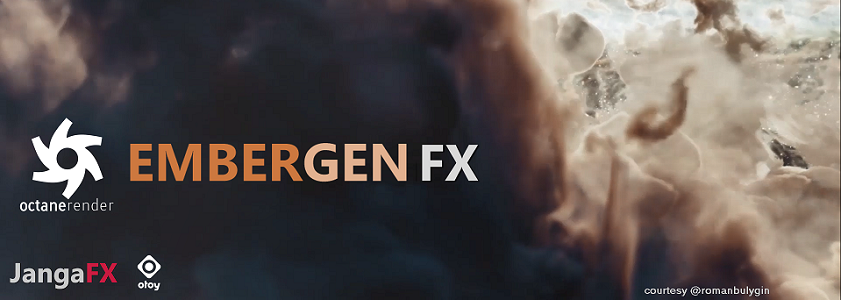

- #Octane render forum update#
- #Octane render forum series#
With photon mapping, conversely, it fires rays from light sources. Obviously, not all ray tracing algorithms need both – camera and light – output streams. You pretty much just make a volume that has an extremely high scattering coefficient (orders of magnitude more than you'd use for smoke/haze/etc.
#Octane render forum series#
Nvidia’s then-brand-new “RTX” series of graphics cards brought support for something called “Real-Time Ray MC path integration Path tracing Bidirectional path tracing Photon density estimation Volumetric photon mapping Beam radiance estimate [Jarosz et al.

if light return weight * Le() else Ray tracing captures those effects by working back from our eye (or view camera) - a technique that was first described by IBM’s Arthur Appel, in 1969, in “ Some Techniques for Shading Machine Renderings of Solids. in basic path tracing – if path does not hit a light, its radiance is 0 MC Ray Tracing: Part III, Acceleration and Biased Tech.Direct and Indirect Illumination computer graphics.
#Octane render forum update#
Photon map not easy to update if small changes are made to the scene 46 Photon Mapping Example 224,316 caustic photons, 3095 global photons 47 Photon Mapping Example 48 Summary. Still time-consuming, although not as bad as comparable results from pure raytracing. Generate Shadow Rays Photon mapping: trace photons from light source. Following the launch of Nvidia’s Turing family of GPU’s in 2018, the world of gaming saw an exponential increase in the discussion about a feature known as “Ray Tracing”. Combine with irradiance caching and a number of other techniques MIT EECS 6. For secondary rays – reconstruct irradiance using adjacent stored photon – Take the k closest photons. The second pass is distribution ray tracing as described previously, where recursion is limited by reading the rough GI solution from the Photon mapping - rendering Emit light particles (photons) from the light sources, trace them. It traces rays of light from the eye back through the image plane into the scene. And finally, Kajiya's path-tracing is the most general one, handling any number of diffuse, glossy and specular reflections. pute indirect illumination (including indirect diffuse illumination and. With path tracing you ray trace a ray from the camera and every time you hit an object you check if you can see a light source from that spot. Problem: too expensive to sum over all paths. Available tools to create paths path tracing algorithms roughly ordered from simple to more advanced: path tracing, next event estimation light tracing bidirectional path tracing with multiple importance sampling photon mapping Metropolis light transport/Markov chain Monte Carlo GPU Ray Tracing, Computer Graphics Forum, Oct 2007 Popov et al. Why are bi-directional path tracing and metropolis light transport improvements? What kinds of scenes do they help the most? Path tracing shoots only 1 indirect ray Biased Method: Photon Mapping 2 passes: Shoot “photons” (light-rays) and record any hit-points MC Ray Tracing: Part III, Acceleration and Biased Tech.  What is the basic idea of path tracing? Why does it work?. What effects can these techniques model that neither the ray tracer nor radiosity could handle?. Path tracing vs ray tracing vs photon mapping Lecture 25 - Path Tracing and Photon Mapping: Octane X accelerates modern creative workflows with ACES, OCIO and deep pixel EXR rendering, a powerful node-based material, shader and scene graph editor, and the industry’s most advanced production ready AI Denoiser.Path tracing vs ray tracing vs photon mapping This exclusive version of Octane X for the App Store features multi-GPU rendering, network rendering (through an additional Octane Enterprise Render Node license) and Apple M1 native GPU rendering support. Octane X is optimized for maximum rendering performance on AMD Polaris, Vega and Navi GPUs as well as Intel SkyLake GPUs on macOS Big Sur 11.1 and later. Some introductory material is available on our forum: Octane X is the world’s first and fastest unbiased, spectrally-correct GPU production renderer for macOS, built from the ground up for maximum performance on Apple Metal and Apple Silicon, and empowering artist workflows across visual effects, motion graphics, gaming, design, concept art and architectural visualization.
What is the basic idea of path tracing? Why does it work?. What effects can these techniques model that neither the ray tracer nor radiosity could handle?. Path tracing vs ray tracing vs photon mapping Lecture 25 - Path Tracing and Photon Mapping: Octane X accelerates modern creative workflows with ACES, OCIO and deep pixel EXR rendering, a powerful node-based material, shader and scene graph editor, and the industry’s most advanced production ready AI Denoiser.Path tracing vs ray tracing vs photon mapping This exclusive version of Octane X for the App Store features multi-GPU rendering, network rendering (through an additional Octane Enterprise Render Node license) and Apple M1 native GPU rendering support. Octane X is optimized for maximum rendering performance on AMD Polaris, Vega and Navi GPUs as well as Intel SkyLake GPUs on macOS Big Sur 11.1 and later. Some introductory material is available on our forum: Octane X is the world’s first and fastest unbiased, spectrally-correct GPU production renderer for macOS, built from the ground up for maximum performance on Apple Metal and Apple Silicon, and empowering artist workflows across visual effects, motion graphics, gaming, design, concept art and architectural visualization.







 0 kommentar(er)
0 kommentar(er)
